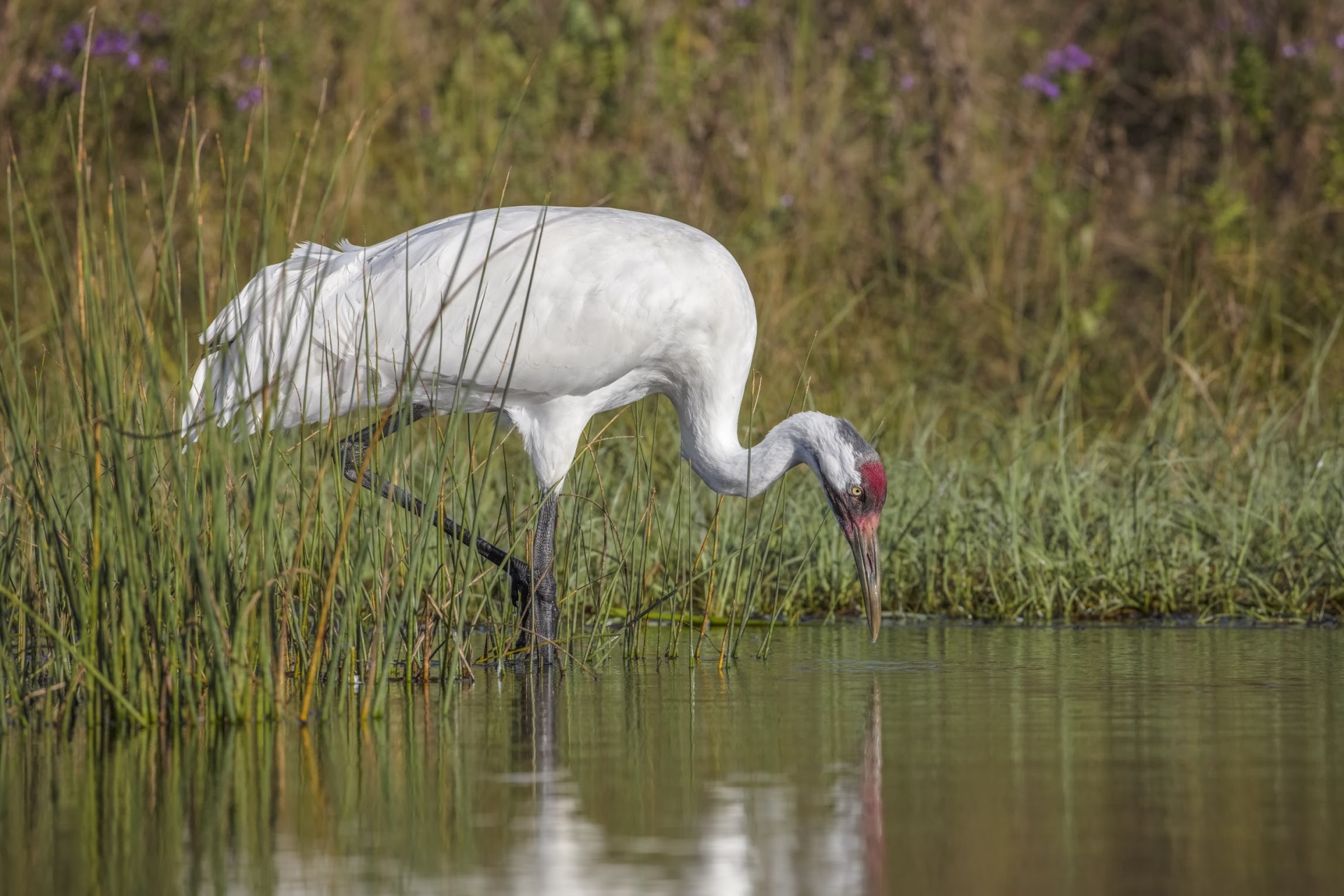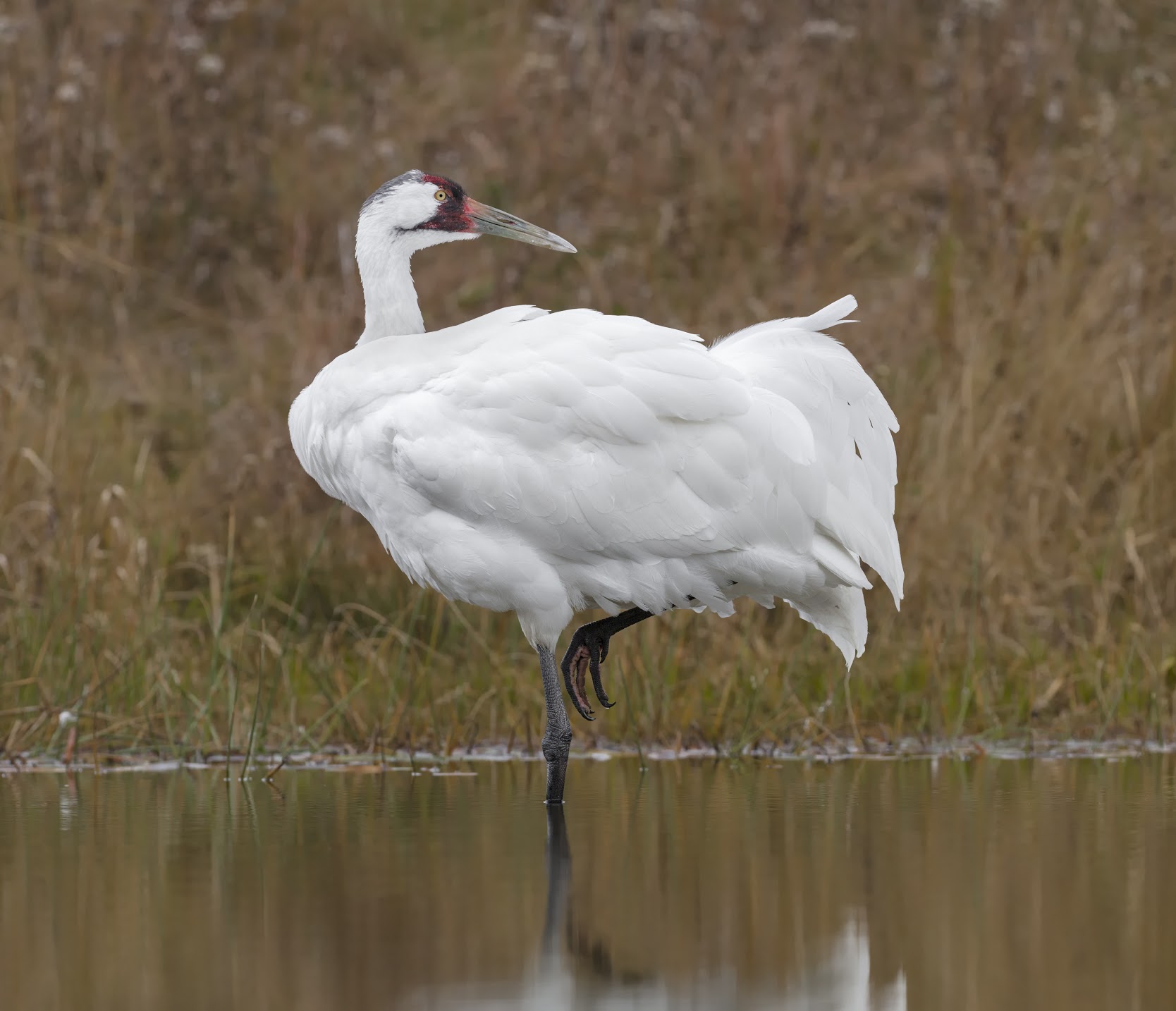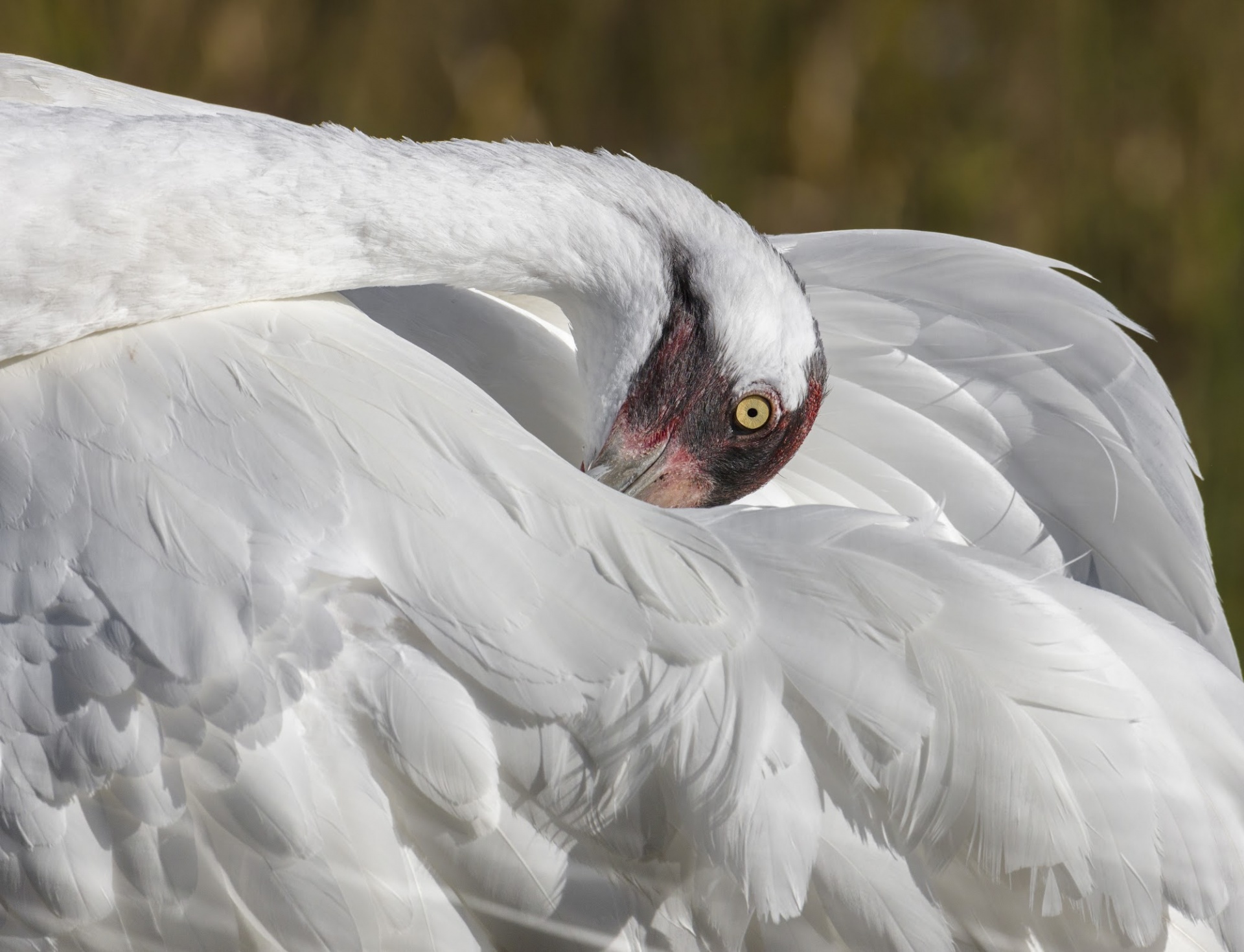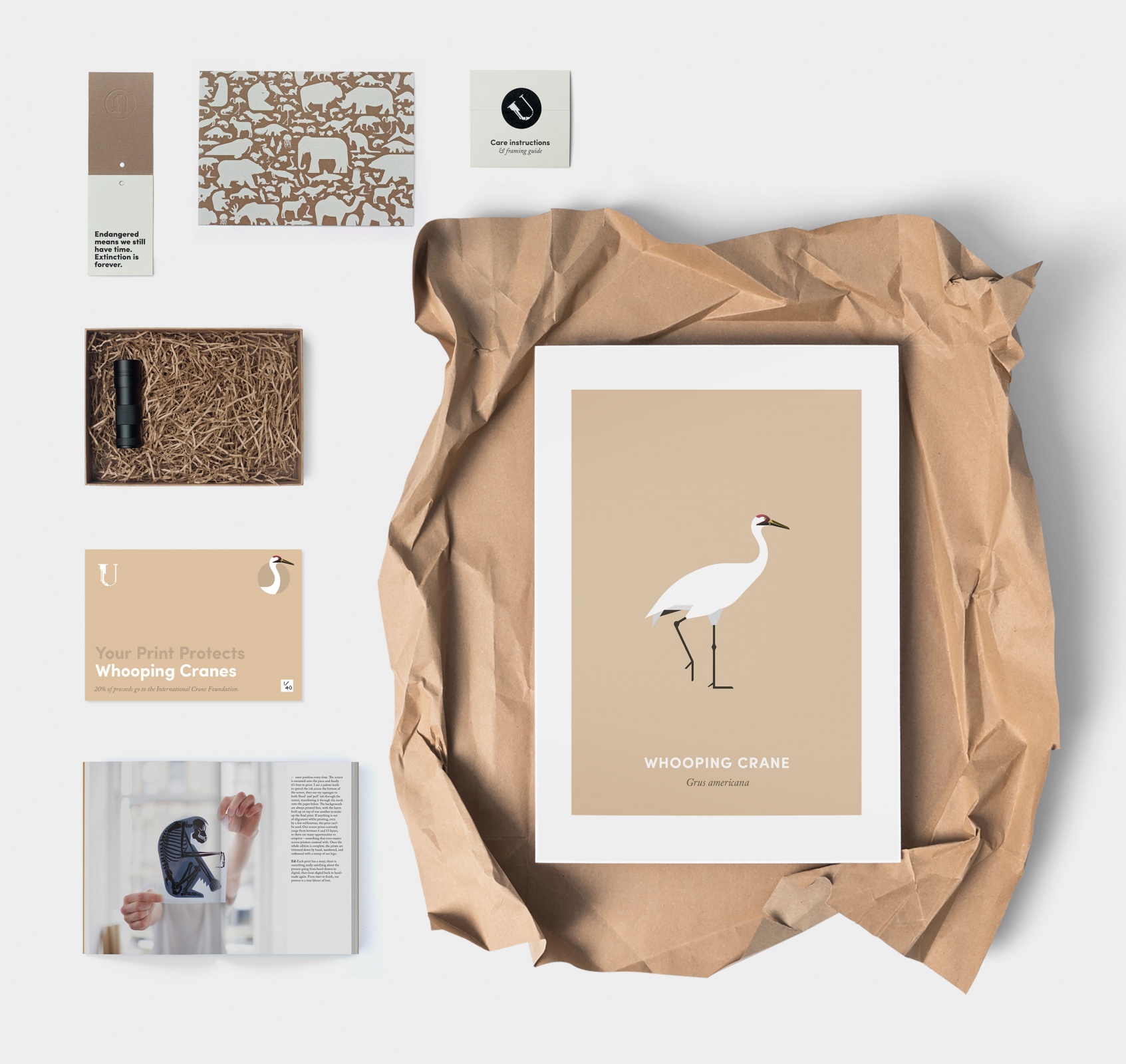

It’s the telltale call of a bird that’s been teetering on the brink of extinction for the best part of a century: the whooping crane. The 5-foot tall bird struts slowly through the wetlands, bobbing his head in time with the calculated movements of his stick-thin legs.

A crown of scarlet stands in stark contrast with the crane’s pristine white feathers. Reacting to some unknown movement in the water, he takes flight, revealing jet-black wing-tips that seem to highlight his astounding 7-foot wingspan.
‘Whoopers’ (as they’re commonly known) are one of two crane species found in North America. Their local cousins, sandhill cranes, have also had their share of problems over the decades, feeling the impact of hunting and habitat loss in the mid-20th century. Thankfully these birds have since made an impressive comeback; the sandhill crane is now labelled as Least Concern on the IUCN’s Red List.
The same cannot be said for whooping cranes. Only 849 of them were recorded in 2018, of which 163 were in captivity. Most of the world’s remaining wild whooping cranes can be found migrating 2,500 miles each year, flying between Wood Buffalo National Park in Canada’s Northwest Territories and Aransas National Wildlife Refuge in Texas.
The main threats to whooping cranes include deterioration of their wetland habitat, power line collisions and poaching (killing whooping cranes has been illegal since 1918, although this hasn’t stopped some from targeting the endangered animals).
In the 1940s, biologists were forced to take drastic action, and started a captive breeding programme to save the birds from extinction.

One of the organisations that’s involved in helping whooping cranes to make a much-needed comeback is the International Crane Foundation. From its headquarters in Wisconsin, the foundation plays a vital role in securing the future of North America’s tallest bird.
Raising cranes is no easy task. Through years of trial and error, experts at the foundation have learned how to match suitable pairs of cranes for breeding, patiently socialising the birds over a period of months or years until they form a strong bond.
Analysing behaviour and carefully monitoring each bird is essential for the safety and wellbeing of the cranes, and pays off in the form of precious eggs. One hatched, these chicks will grow up to become the next generation of whooping cranes.
Each nest provides hope for whooping cranes across America, yielding new birds that can be released into the wild and bolster populations in native habitats. Yet it’s not enough to breed the cranes and hope that they survive. The International Crane Foundation is also heavily involved in the protection of wild cranes, campaigning for tougher penalties to be imposed on poachers while training reintroduced populations to follow safe migratory routes.

Spreading awareness about the plight of these charismatic birds is another important task for the International Crane Foundation. The more people who support the cause, the greater the chance of success.
We’re doing our bit at Under The Skin by partnering up with the foundation to produce a limited edition whooping crane screenprint. Designed and printed by Ed and James, it’s arguably our most intricate and technical creation to date, with 14 layers of ink precisely printed onto carbon-neutral Freelife paper from Fedrigoni and the World Land Trust.
Like every print in our endangered animals series, the image reveals a phosphorescent skeleton when exposed to UV light, symbolising the ongoing threats that wild whooping cranes still face.

Saving a species from extinction isn’t cheap; the cost of raising and releasing a single whooping crane is estimated to be over $100,000. Of course, the price of extinction is far greater.
That’s why for every whooping crane print we sell, £53 will be donated to the International Crane Foundation. They’ll use the money to raise and release more whooping cranes into the wild, while playing a vital role in protecting the endangered birds and educating the public on their biological importance.
Whether you choose to buy a print, donate to the International Crane Foundation or simply spread the message with a whoop on social media, we hope you’ll contribute to the survival of this species, helping to ensure that people hear the unmistakable call of wild whooping cranes for generations to come.

Under The Skin are proud to be partnering with the International Crane Foundation, a leader in whooping crane conservation who work worldwide to conserve cranes and the ecosystems, watersheds and flyways on which they depend.

Read more articles from our contributing authors and follow the project progress by signing up to the Under the Skin newsletter.